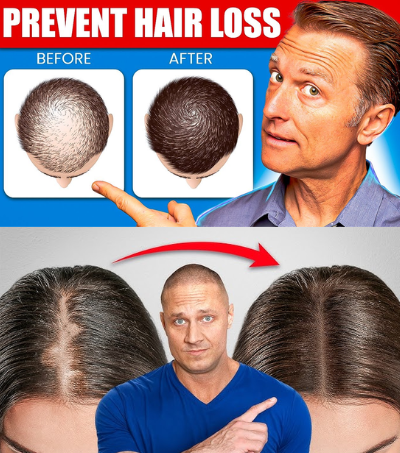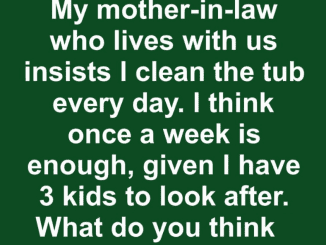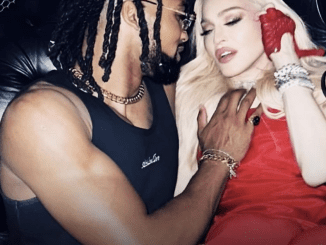
Hair fall is a concern that touches almost everyone at some point. Shedding a few strands daily is normal, but excessive hair loss can be distressing. Luscious, healthy hair is something we all dream of, yet modern lifestyles, pollution, and stress can make it a struggle. From breakage and frizz to dandruff and thinning, hair is vulnerable to many issues. Understanding why hair falls out is the first step toward preventing it and maintaining that gorgeous mane.
The Science Behind Hair Fall
Before diving into remedies, it’s important to understand what causes hair to fall. Hair growth follows a natural cycle, and any disruption—genetic, environmental, or lifestyle-related—can lead to shedding. Let’s explore the main factors.
Genetics: Hereditary Hair Loss
One of the most common culprits behind hair fall is genetics. Also known as androgenic alopecia, hereditary hair loss occurs gradually in predictable patterns. Men often notice a receding hairline and bald spots, while women typically experience thinning around the crown. Genetics essentially sets the blueprint, but lifestyle choices can influence how quickly hair falls.
Aging and Hair Growth
As we age, hair growth slows. Hair follicles eventually stop producing new hair, and existing strands thin. Color fades, and volume diminishes. While this is a natural part of aging, maintaining a healthy lifestyle can slow the process and keep hair looking fuller for longer.
Medical Conditions: Alopecia Areata and Scalp Disorders
Some hair loss stems from medical issues. Alopecia areata, an autoimmune disorder, leads to unpredictable patchy hair loss. Other triggers include trichotillomania (a hair-pulling disorder) and scalp infections like ringworm. If hair loss seems sudden or uneven, consulting a dermatologist is essential.
Poor Hair Care and Excessive Styling
Neglecting hair care routines—like regular washing, oiling, and conditioning—can weaken hair. Over-styling, tight hairstyles, and frequent heat treatments cause traction alopecia and breakage. Scarring from extreme styling can even lead to permanent hair loss. Using gentle tools and limiting heat can make a noticeable difference.
Lifestyle Factors: Stress and Nutrition
Your hair mirrors your lifestyle. High stress, poor sleep, and unhealthy eating habits can trigger temporary hair thinning. On the flip side, a balanced diet, proper rest, and stress management promote healthy hair. Vitamins, proteins, and minerals directly influence hair growth and density.
Video : 12 Proven Remedies to Prevent Hair Loss and Regrow Hair
Environmental Impacts: Pollution and Weather
Air pollution and harsh weather conditions irritate the scalp, cause dandruff, and weaken hair roots. Dust, UV rays, and fluctuating temperatures contribute to hair fall over time. Protecting your hair with suitable products and covering it during harsh conditions can mitigate these effects.
7 Effective Tips to Control Hair Fall
Now that we understand the causes, let’s look at practical ways to curb hair loss and strengthen your hair.
1. Maintain Scalp and Hair Hygiene
A clean scalp is essential for healthy hair growth. Dirt, sweat, and impurities block follicles and reduce nutrient supply. Experts recommend washing hair at least twice a week or more if you sweat heavily during exercise. A clean scalp promotes better blood circulation and reduces hair shedding.
2. Condition and Protect Hair
Conditioning after every wash improves hair texture, reduces friction, and prevents breakage. Hair masks with ceramides, pea protein, and omega-3 fatty acids lock in moisture, repair strands, and reduce frizz. A protective hair mask can penetrate deeper than regular conditioners, nourishing hair from root to tip.
3. Use Anti-Hair Fall Products with Science-Backed Ingredients
Opt for gentle, dermatologically tested shampoos and serums that strengthen hair and nourish the scalp. Ingredients like aminexil, pisum sativum sprout extract, aloe vera, and murumuru help revitalize hair and promote growth. Avoid products with sulfates, silicones, or parabens that can strip natural oils.
4. Switch to Wooden Combs
Plastic combs can cause static, breakage, and scalp irritation. Wooden combs reduce abrasion, enhance blood flow, and distribute natural oils, keeping hair soft, manageable, and less prone to damage.
5. Avoid Tight Hairstyles
Repeatedly pulling hair back in ponytails or braids leads to traction alopecia. Use padded clips, soft hair ties, and avoid constant tension to prevent stress on hair roots and minimize hair fall.
6. Exercise to Boost Circulation
Physical activity improves blood flow to the scalp, delivering oxygen and nutrients that stimulate hair growth. At least 30 minutes of cardio three times a week can support not just your overall health, but also your hair’s vitality.
7. Eat a Hair-Friendly Diet
Nutrition is critical for strong, healthy hair. Include proteins, leafy greens, fruits, iron-rich foods, and vitamins like biotin in your diet. Hydration is equally important—water supports cell function and hair growth.
Video : How I STOPPED MY HAIR LOSS! | #1 Thing That Re-Grew My Hair
Conclusion: Proactive Care for Lasting Hair Health
Hair fall can be alarming, but understanding its causes and taking preventive measures can help you maintain healthy, lustrous hair. Start by addressing lifestyle, stress, and nutrition, and incorporate a science-backed hair care routine. Use gentle products, avoid harsh styling, and protect your scalp from environmental stressors. With consistent care and attention, you can strengthen your hair, minimize loss, and enjoy a fuller, healthier mane for years to come.


